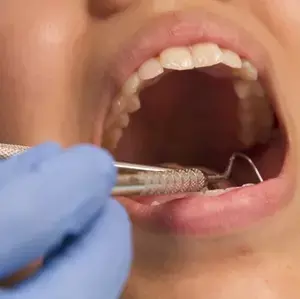- Home
- Medical news & Guidelines
- Anesthesiology
- Cardiology and CTVS
- Critical Care
- Dentistry
- Dermatology
- Diabetes and Endocrinology
- ENT
- Gastroenterology
- Medicine
- Nephrology
- Neurology
- Obstretics-Gynaecology
- Oncology
- Ophthalmology
- Orthopaedics
- Pediatrics-Neonatology
- Psychiatry
- Pulmonology
- Radiology
- Surgery
- Urology
- Laboratory Medicine
- Diet
- Nursing
- Paramedical
- Physiotherapy
- Health news
- Fact Check
- Bone Health Fact Check
- Brain Health Fact Check
- Cancer Related Fact Check
- Child Care Fact Check
- Dental and oral health fact check
- Diabetes and metabolic health fact check
- Diet and Nutrition Fact Check
- Eye and ENT Care Fact Check
- Fitness fact check
- Gut health fact check
- Heart health fact check
- Kidney health fact check
- Medical education fact check
- Men's health fact check
- Respiratory fact check
- Skin and hair care fact check
- Vaccine and Immunization fact check
- Women's health fact check
- AYUSH
- State News
- Andaman and Nicobar Islands
- Andhra Pradesh
- Arunachal Pradesh
- Assam
- Bihar
- Chandigarh
- Chattisgarh
- Dadra and Nagar Haveli
- Daman and Diu
- Delhi
- Goa
- Gujarat
- Haryana
- Himachal Pradesh
- Jammu & Kashmir
- Jharkhand
- Karnataka
- Kerala
- Ladakh
- Lakshadweep
- Madhya Pradesh
- Maharashtra
- Manipur
- Meghalaya
- Mizoram
- Nagaland
- Odisha
- Puducherry
- Punjab
- Rajasthan
- Sikkim
- Tamil Nadu
- Telangana
- Tripura
- Uttar Pradesh
- Uttrakhand
- West Bengal
- Medical Education
- Industry
Air particulate concentration during orthodontic procedures during COVID-19 pandemic: a pilot study

Dental practices are potentially at risk of transmission for COVID-19 and some protocols have been established in order to make the risk as low as possible.
However, there prevails a tendency to think that orthodontists have a lower risk of disease compared to professionals in other fields of dentistry, but it has been found out that during treatment, the number of particles of 0.3 microns—which have a high capacity to penetrate the respiratory tract increase, suggests a study.
This study published in the BMC Oral Health Journal, evaluates the particle dispersion involved in dental procedures carried out during orthodontic treatments. Variants such as temperature and relative humidity in the dental cabinet were considered.
Inmaculada Martín-Quintero and associates from the Department of Orthodontics, Universidad Alfonso X El Sabio, Madrid, Spain conducted a pilot study using a particle counter, in which 98 consecutive recordings were made during appointments of patients undergoing orthodontic treatments.
Temperature, relative humidity and particles present at the beginning (AR) and during the appointment (BR) were recorded. A control record (CR) of temperature, relative humidity and particles present was made before the start of the clinical activity.
In addition to conventional statistics, differential descriptive procedures were used to analyse results, and the influence of relative humidity on particle concentration was analysed by statistical modelling with regression equations.
Results showed that the number of particles present, regardless of their size, was much higher in AR than in CR (p < .001). The same was true for relative humidity and ambient temperature. The relationship between relative humidity and particle number was determined to be exponential.
Although, limitations are associated with sample size, environmental conditions of the room and lack of discrimination among the procedures performed, the authors concluded that from the moment a patient enters a dental office, a large number of additional particles are generated.
This pilot study shows the significant increase in number of particles starting from the moment the patient enters the dental cabinet and removes the mask compared to those that existed during the basal environmental particles that may be found earlier. Regarding the particles generated during treatment, the main finding is an increase in particles of 0.3 micron.
The number of particles, especially smaller ones, increases from the time of control time with an empty room compared to the beginning of the treatment time (300%). This is important as it indicates that some of the measured particles are not exclusively generated by the treatment.
Dr. Nandita Mohan is a practicing pediatric dentist with more than 5 years of clinical work experience. Along with this, she is equally interested in keeping herself up to date about the latest developments in the field of medicine and dentistry which is the driving force for her to be in association with Medical Dialogues. She also has her name attached with many publications; both national and international. She has pursued her BDS from Rajiv Gandhi University of Health Sciences, Bangalore and later went to enter her dream specialty (MDS) in the Department of Pedodontics and Preventive Dentistry from Pt. B.D. Sharma University of Health Sciences. Through all the years of experience, her core interest in learning something new has never stopped. She can be contacted at editorial@medicaldialogues.in. Contact no. 011-43720751
Dr Kamal Kant Kohli-MBBS, DTCD- a chest specialist with more than 30 years of practice and a flair for writing clinical articles, Dr Kamal Kant Kohli joined Medical Dialogues as a Chief Editor of Medical News. Besides writing articles, as an editor, he proofreads and verifies all the medical content published on Medical Dialogues including those coming from journals, studies,medical conferences,guidelines etc. Email: drkohli@medicaldialogues.in. Contact no. 011-43720751


